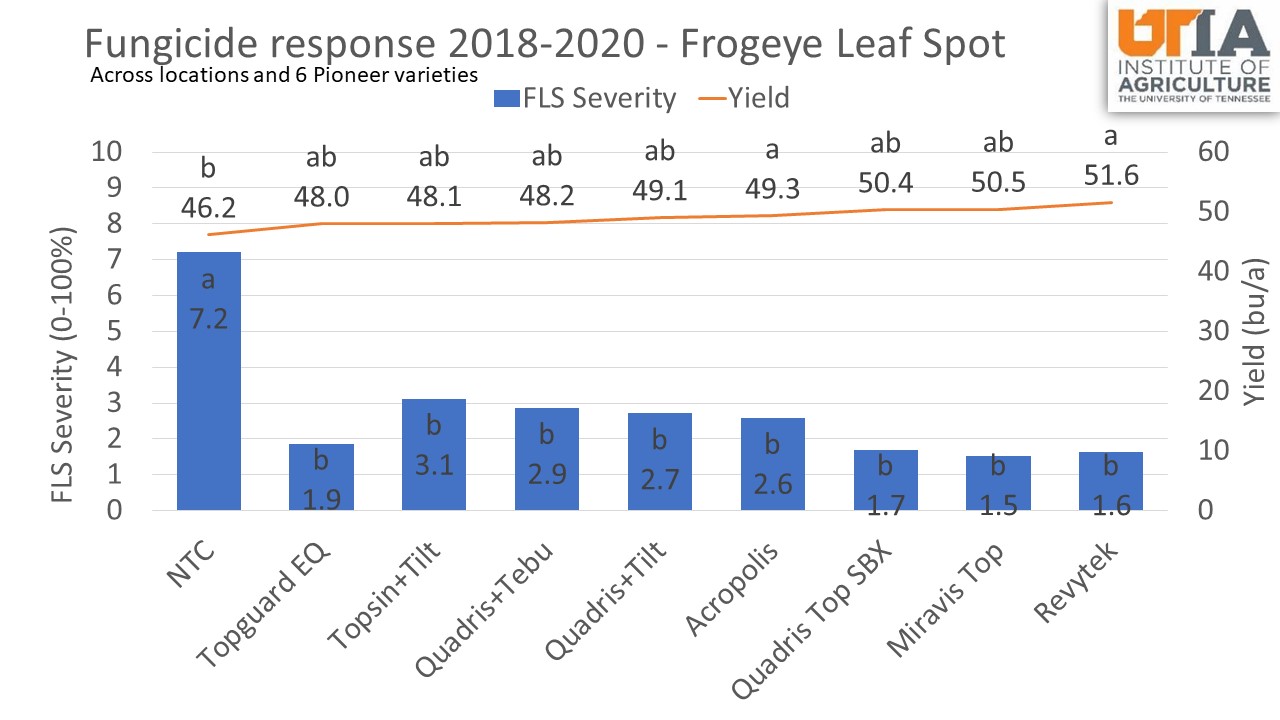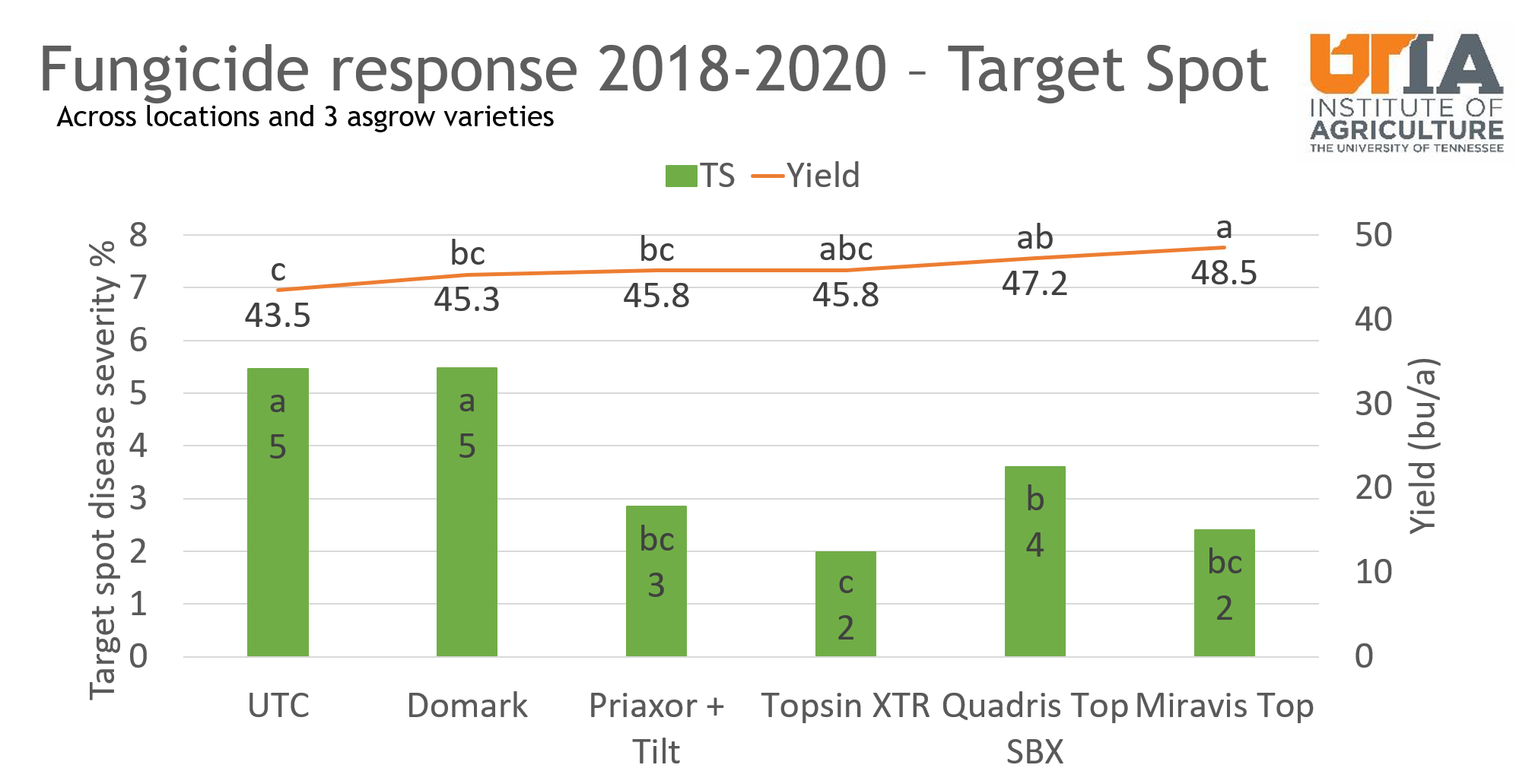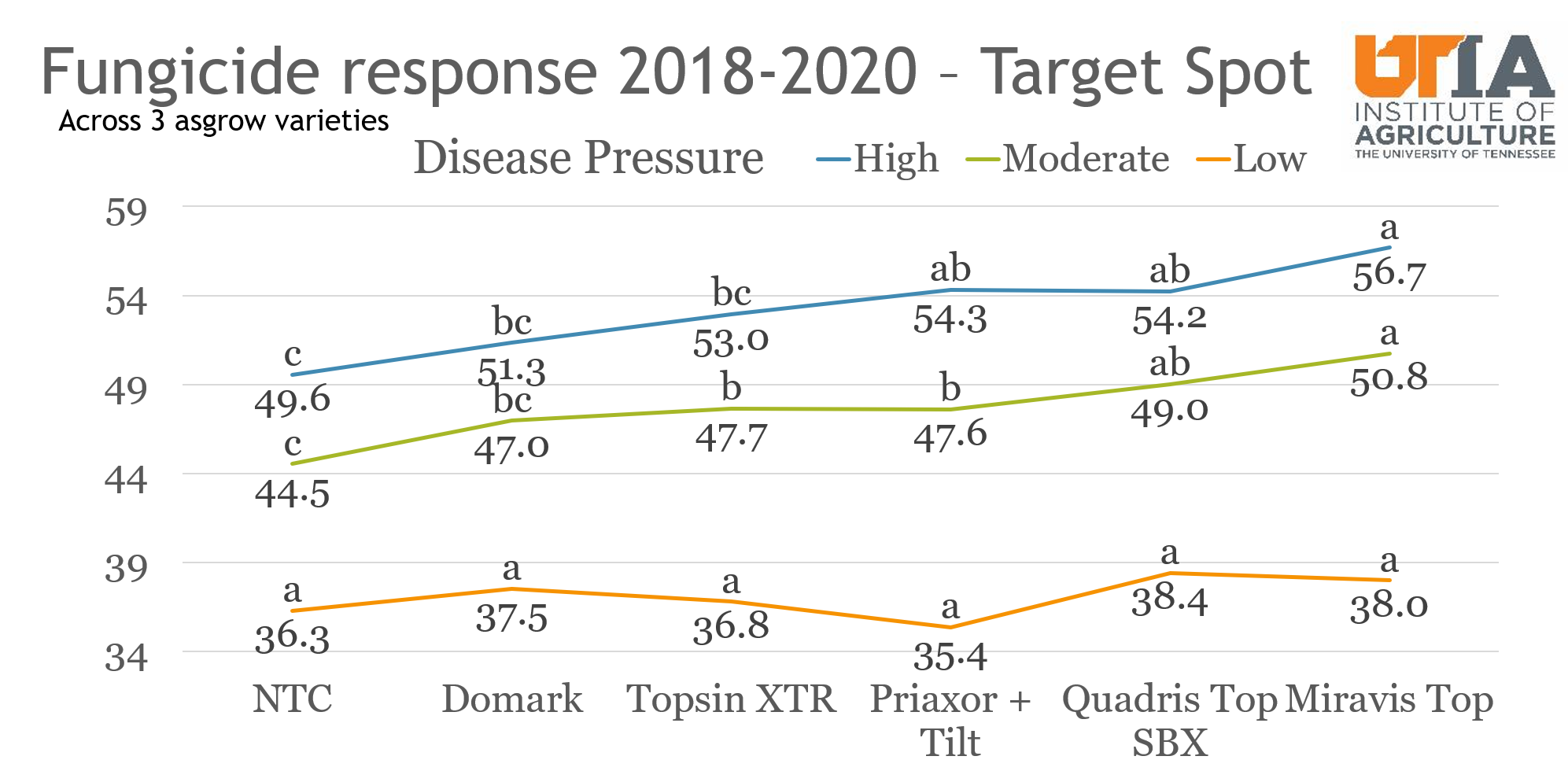With the majority of soybean fields in Tennessee in reproductive growth stages, it’s time to scout for diseases and make fungicide application decisions.
Very little to no disease can be found in Tennessee soybean fields to date. Only diseases that have begun include Septoria brown spot in the lower canopy, although many fields have herbicide injury in the lower canopy that can be mistaken for Septoria brown spot; and some downy mildew. While fungicide application is rarely warranted for downy mildew, as Septoria brown spot develops and moves up the canopy, a fungicide application may be needed to protect yield. (Tired of reading already, listen to this 7 min podcast on Soybean Diseases and Available Resources on the UTIA Culture & Agriculture podcast station)
In any instance, to determine if a disease will become a significant PEST, that will affect yield, four main factors need to be considered…
- Pathogen presence – can be influenced by field history
- Environment – the right conditions for disease to develop
- Susceptible host – a variety that is susceptible to disease
- Time – regarding the growth stage of the plant and when the disease develops
Scouting for and correctly identifying disease during soybean reproductive growth stages is critical to determine how necessary a fungicide application may be in protecting yield from disease and which product would have the best efficacy. Some diseases have characteristic symptoms that are easily identified, where others may not be specific and may be mistaken for weather or chemical damage. Pattern in the field where symptoms are observed and entire plant samples should be examined and when needed can be taken to your local extension county agent for identification.
Some common soybean diseases found in Tennessee include Frogeye Leaf Spot, Septoria Brown Spot, Target Spot, Southern Stem Canker, Charcoal Rot, and Sudden Death Syndrome. Descriptions of symptoms, pictures, and management options for these and other soybean diseases can be found on the mobile friendly field guide at guide.utcrops.com. Many diseases can be avoided by planting a disease tolerant/resistant variety, regularly rotating to non-host crops, and when warranted fungicide applications can be applied.
The searchable variety database at search.utcrops.com can be used to look up disease ratings on varieties as well as average yield response to fungicide (this is across different disease environments and have ranged from as high as a 14 bu/a response to no yield response – this relates back to disease susceptibility as well as the disease pressure within that field). UT research has previously indicated that under circumstances of high disease pressure and conducive environmental conditions, timing a fungicide application at R3-R4 (beginning pod develop to full pod development) provides the most consistent yield protection.
A foliar fungicide efficacy table (Soybean Fungicide Efficacy Table found at UTCrops.com) is developed by The North Central Regional Committee on Soybean Diseases (NCERA-137) and modified as needed by each state to provide information on foliar fungicide efficacy for control of major foliar soybean diseases. The table lists major soybean diseases and rates the different fungicides efficacy for each disease.
Specific fungicide efficacy trials that I, along with my graduate students, have conducted over the past years investigating if different fungicides pair better with different varieties have found that regardless of variety, the same fungicide products protected yield better than others (Figures 1 and 2). The results in the figures are from 2 different studies, one focusing on varieties with different susceptibility to frogeye leaf spot (FLS) – Figure 1; and the other focusing on varieties with different susceptibility to target spot (TS) – Figure 2. Both trials were conducted with 3 different varieties each year (differing in their susceptibility), 5 different fungicides compared to a non-treated check (NTC) and conducted at 3 different locations that varied in disease pressure (high and moderate pressure, full season locations) and one location planted after wheat (low to no disease pressure). The results presented here from 2018 through 2020 season.


While there were not significant interactions between fungicide product and different varieties on yield (i.e. same responses across all varieties), location was highly significant and lower disease pressure locations did not see any differences in yield from fungicides compared to non-treated checks (Figure 3). More specifically, sites with greater disease (Frogeye leaf spot rating 14 to 24%) and relatively high yield potential (57 to 69 bu/a) had the highest probability of a fungicide protecting yield compared to a non-treated check (from this data set). Hence, fields that are continuous soybean and disease is present during early to mid-reproductive growth stages have the greatest potential to benefit from a fungicide application; whereas fields that are regularly rotated and free of disease may not benefit from a fungicide application.


